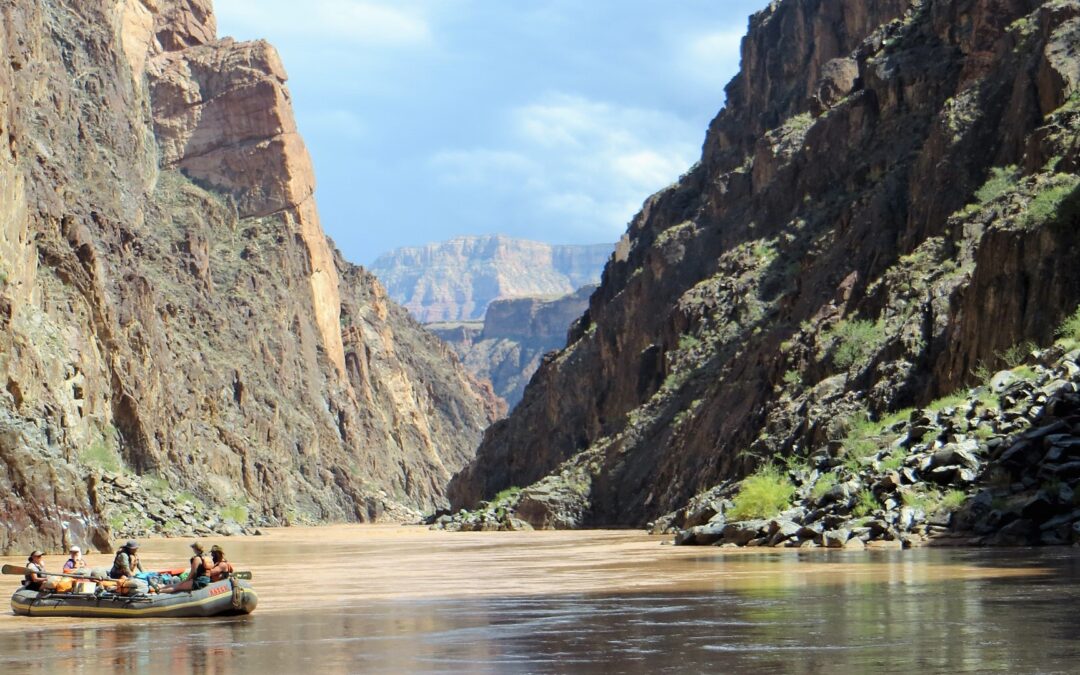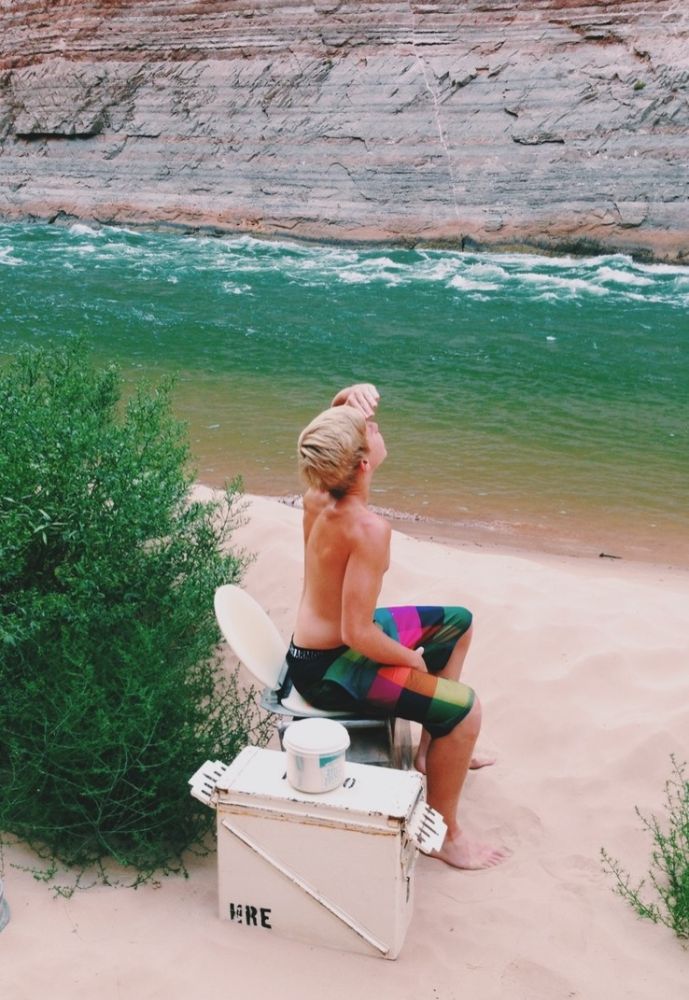Grand Canyon National Park recently announced that the park will be temporarily closing to overnight hotel stays starting on December...


It can be an awkward conversation, but if you’ve never been on a Grand Canyon river trip or other similar adventure, you may have NO IDEA how you will use the bathroom on your trip! Since it can be an embarrassing conversation for some folks, we thought we’d give you the rundown on bathrooms on Grand Canyon River trips here.
One of the most challenging things for those who manage popular outdoor destinations can be keeping them free from human impacts, including human waste (both natural and manufactured). In the backcountry of Grand Canyon, there are no developed rest stops of any kind, so there are a few guidelines we follow to make sure the park stays pleasant for everyone who visits:
Every hour or two, your trip will make a stop. Often, this is to go on an adventurous hike up a side canyon, to play on a riverside beach, or to relax and enjoy a delicious lunch, but sometimes it is just to give everyone a chance to relieve themselves. You should be drinking enough water and other fluids on your trip that you need to take advantage of just about every stop.
You might hear the guides use this catchphrase to indicate which direction you should go during a pit stop to remain with a bathroom group of your same gender. It might feel a little awkward at first, trotting off in a group to all go pee, but in the backcountry, you do what you must. It gets less awkward with time, and like with many other inconveniences about spending an extended time camping in the backcountry, it is worth it to have access to such an amazing place as Grand Canyon.
Peeing in the river is not always the most convenient thing—especially for women, especially when it is cold. We include on our recommended packing list something called a female urinal or “pee pod.” It essentially acts as a slightly more sophisticated funnel, allowing women to pee in a more upright position from shallow water or even the shore and to direct their urine into the river. Some of our guests have even come up with their own creative solutions, such as bringing personal containers they use at night to pee in and then empty into the river in the morning.
Whether they call it “the groover,” “the porto,” or just “the toilet,” the guides on your trip will scout out the most private, secluded location for the portable toilets on your trip. Typically, these will be at the far ends of your campsites. We recommend scouting out the toilet location in the daylight so if you have to find it after the sun goes down, you already know where to look. The groover is generally the first thing set up in camp and the last thing taken down in the morning so that everyone has ample time to use it while in camp. Along with the toilet itself, we provide toilet paper and some cleaning supplies. The groover is basically a box with some chemicals in the bottom and a toilet seat attached. It must be carried to and from the boats every time we set up and take down camp, so by the end of a trip, it starts to get heavy.
We ask that, as much as possible, the toilets be kept “dry,” meaning that, if possible, you should avoid urinating in them. We know that for some people, separating those bodily functions can be difficult and that sometimes, accessing the river can be treacherous at night, so use your best judgment and use the toilet if you need to.
In addition to the toilet itself, your guides will set up a hand washing station near the start of the path to the groover. It is imperative that you wash your hands after each and every time you use the toilet on your trip to avoid potentially spreading diseases such as norovirus.
To make sure everyone can tell whether the camp restroom is occupied or not, we use a “key” system. There will be an item (often a bucket) placed by the hand washing station that you will bring with you if you go to use the toilet and then return when you are finished. If that item is not by the hand wash, you know that the restroom is occupied. Just don’t forget to bring back the key item—it’s like leaving the bathroom door locked behind you when you leave.
When you’ve gotta go number 2, you’ve gotta go, but if you’re not in camp, you won’t have access to a toilet. Don’t worry, we have a solution for that! When you’re at a pit stop, ask your guides for a WAG bag. These are bags specifically designed for human waste disposal in the backcountry. It is essentially just a plastic bag with a small amount of chemicals in the bottom. Find a secluded area, do your business into the bag, seal it up, and give it to the guides, who will store it and dispose of it properly after the trip. If you have a medical condition, reaction to medication, or another reason you expect to routinely need WAG bags throughout the trip, let us know in advance and we can provide you with a supply of them that you can keep with your day gear.
About the least convenient place to get your period is on a backcountry camping trip, but trust us, it happens all the time and can be very manageable. Here’s what you should bring:
When your trip makes a pit stop, bring your kit of supplies with you and ask your group for a little extra privacy. Change your tampon, empty your menstrual cup, or do whatever else you may need to do, depending on the products you are using. Clean up using your disposable wipes and put all used products, packaging, wipes, etc., that need to be disposed of into one of the small ziplock bags. Then, put your ziplock bag of waste products into the normal trash on the boat. (It should also be safe to store with your day gear if you don’t have immediate access to the trash.)
In our normal lives, most of us don’t think much about how/when/where we’ll have access to a bathroom, so when you book a Grand Canyon river trip, you may come up with questions you never thought to ask before.
We hope we’ve covered the bases for you here, but if you have any further concerns, don’t hesitate to contact our office. We’ll talk through whatever questions you have and make sure you are confident and ready to go on the river!
If you’re rafting when there are monsoons in Grand Canyon, you might experience something incredible Imagine this: It’s your second day in the canyon and you are overwhelmed by how monumentally tall the walls around you seem to have gotten in such a short time. In the...
Bugs in Grand Canyon! With Halloween at the end of the week, it will be hard to go anywhere without being inundated by pumpkins, spider webs, costumes, and candy. In the spirit of the season, we thought you might like to know a bit about some of the more...
Grand Canyon Q&A: A Conversation with 7th Graders This past week, I got a call from our office asking if I’d be willing to talk to some seventh graders about the Grand Canyon. It was definitely an unusual request for me, but of course I said yes. When I...